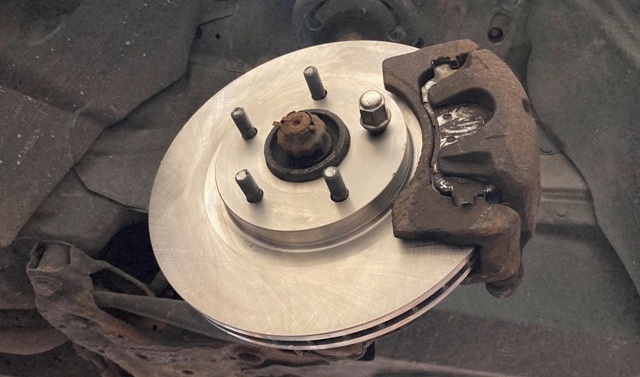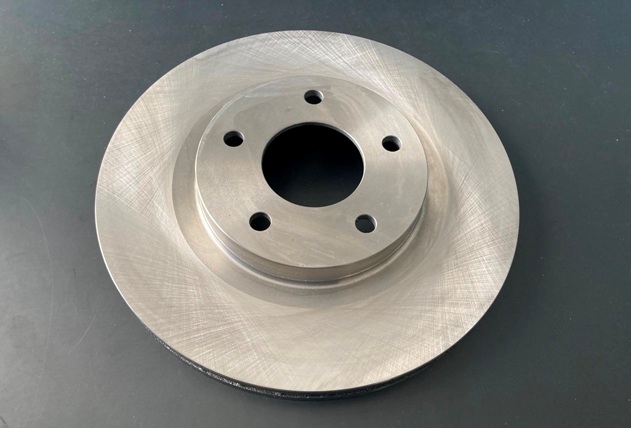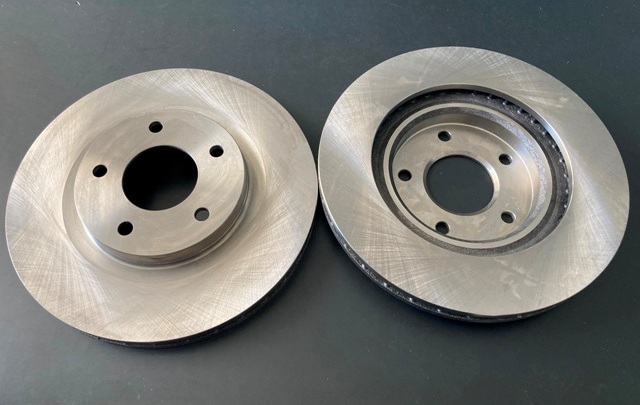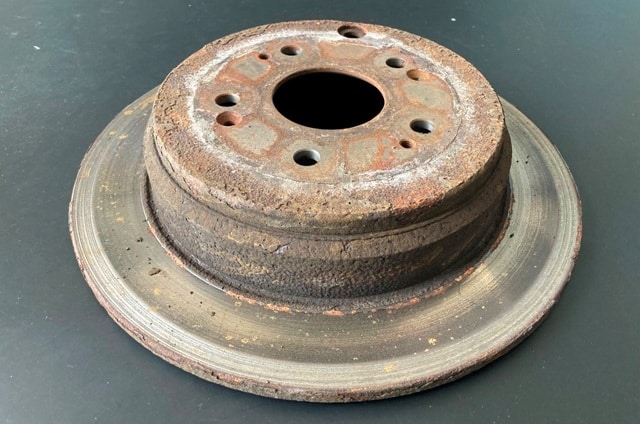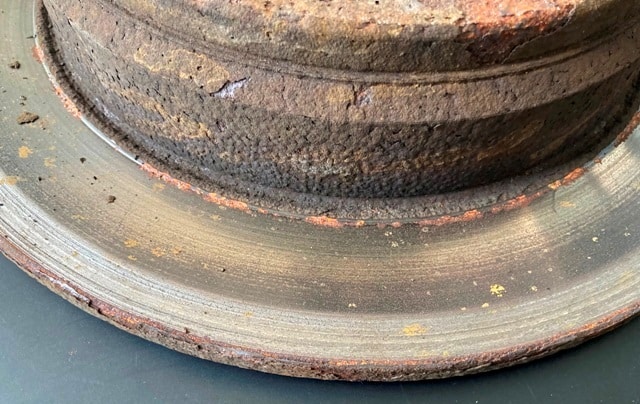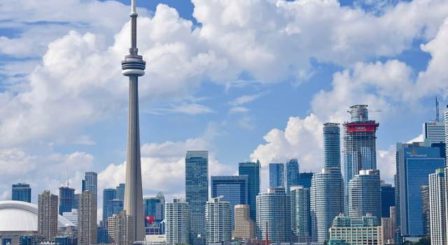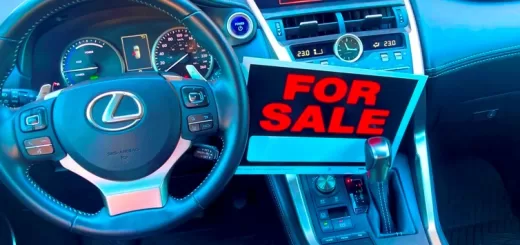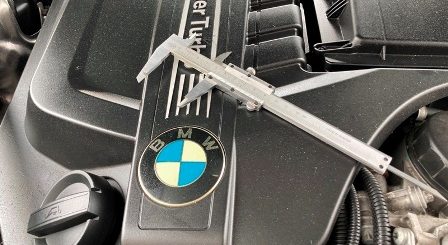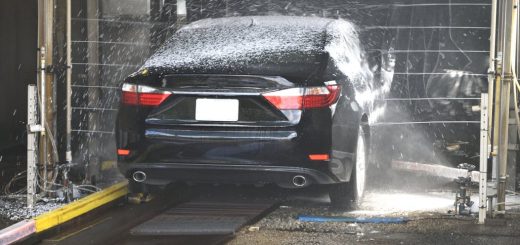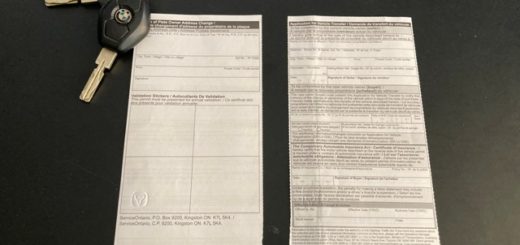What are Brake Rotors
Adding horsepower to a car is one thing, stopping a car is another thing altogether. This is where brake rotors come in. Brakes are most important safety system in your car and should be treated with respect, so to speak.
Modern vehicles use two types of brakes: Disc Brakes and Drum Brakes. There are also cars which use both types of brakes, disc brakes in front wheels and drum brakes on rear wheels. Disc brakes use rotors to stop a vehicle while drum brakes use drums. Image below shows Discs Brake system.
Disc brakes are better than drum brakes on almost everything and are used extensively by car manufacturers. Brake rotors are also called brake discs, it’s the same thing just a different name.
What are Brake Rotors
Brake rotors (or brake discs) are an integral and crucial component of disc braking system. Brake rotor is a large metal disc mounted on vehicle hub. Each wheel has a brake rotor and two brake pads. Rotors are installed on vehicle spindle using vehicle wheel lug nuts and are designed to handle large amount of heat and pressure.
Image below shows a plain or a simple front brake rotor. Brake rotor comes in different sizes. Front brake rotor is larger than rear brake rotors and more expensive. Front brakes do most of stopping when your press your brake pedal. Larger rotor can handle more heat and have larger stopping power.
How Brake Rotor Works
Thermodynamic laws say energy cannot be destroyed but only changed. Hence, brake rotor transform kinetic energy created during braking into heat, and stop your car.
Brake rotor (or brake discs) turn friction or kinetic energy into heat. Rotors are attached to the wheel hub and spin together with vehicle wheel. Pressure applied from brake pedal creates friction between brake pads and and brake rotors. Friction created between brake pads and brake rotors stops the car.
Depending on amount of pressure applied, you can stop a car violently or slowly stop by controlling (raising or reducing) amount of friction between brake pads and brake rotors. Rotors need to dissipate heat in order to function properly and for extended periods of time. Rotors have two separate halves with fins or ribs between them.
Heat is dissipated by creating a large surface area and by directing air pressure into brake rotors for cooling while removing heat from brake pads.
Heat is removed in two ways: Conduction and Convection. Conduction transfer happens when heat is transferred from the higher temperature part to a lower temperature part. Convection transfer is when heat is transferred using air, as air flows it removes heat and dissipates it. Higher air flow will remove more heat on shorter period of time.
(If you are also looking for a fast and easy solution to sell your car, more here on “How To Sell Your Car Fast” )
Types of Brake Rotors
Rotors come in different types, designs and materials. Materials use generally steel but performance or racing cars use ceramic rotors. Of course, ceramic rotors are quite expensive.
Plain Brake Rotors
These are your everyday rotors, used on almost every vehicle on the road. These are cheapest by price and simplest by design. Plain rotors will handle everyday driving fine and will not break your wallet. Most vehicles come with plain rotors as original equipment. Quality of blank rotors varies and mostly depends on price. Higher price will translate to better materials or steel quality.
Drilled Brake Rotors
Drilled rotors are used mostly on performance and sport cars. These rotors have higher ventilation and heat dissipation. Also drilled rotors will handle wet condition better. Holes along brake rotor axis will remove water faster and increase braking power driving in rain or wet condition.
Slotted Brake Rotors
Instead of holes, slotted brake rotors have groves along brake rotor on braking surface. Slots on braking surface will dissipate heat better, remove braking material debris and allow from extra ventilation. Slotted rotors are used on large and performance vehicles which require large amount of braking power due to large weight or higher speeds.
Drilled and Slotted Brake Rotors
These rotors have holes and slots on braking surface areas for maximum heat dissipation, longer braking ability and higher stopping power. Drilled and slotted rotors are generally used on race cars, track cars or other high speed sport cars. Trade off with these type of brake rotors is brake pad lifespan will be shorter. Edges created by holes and slots will wear brake pads much faster than plain or drilled rotors.
Ceramic Brake Rotors
Ceramic rotors are very expensive are used generally on very expensive, top of the line performance sport cars. Rotors made with ceramic materials are very resistant to heat and last a long time. However, price is so expensive it becomes prohibitive for use on everyday cars. Porsche was the first to introduce ceramic rotors on their racing cars line up.
Ceramic rotors also are lightweight when compared to steel ones. Anyways, for now ceramic rotors are a novelty, a very expensive novelty few can afford. Detailed video on how ceramic rotors are made from “How Its Made” documentary. Ceramic rotors: How Its Made – Ceramic Rotors.
Brake Rotor Lifespan
One thing to point out, rotors are bare metal and will rust if you don’t drive your car frequently. Park your car inside if you are not driving for extended periods, let’s say few months, especially in winter time. Once rust develops on brake rotors surface, it will not stop and cannot be fixed. You will have to replace brake rotors.
1) Material Quality
Lifespan of brake rotors will ultimately come down material quality. Rotors with higher quality materials will have a longer lifespan and will handle much more heat and other wear factors.
2) Driving Environment
Driving environment is another factor. City driving will shorten rotors lifespan while highway driving is easy on rotors as high speed dissipates heat faster.
3) Brake Pads
Brakes pads have a say too on brake rotor lifespan. Brake pads with harder materials will wear brake rotors faster. Softer brake pads such as organic brake pads will prolong brake rotor lifespan. More on Brake Pad Types.
4) Environment and Climate
Driving conditions, weather, salt and other environmental factors will also decide rotors lifespan. Salt will cause rust and shorten rotors lifespan. Rotors lifespan will be shorter in places with harsh winter where snow melting chemicals or salt is implemented in winter. Also high humidity affects rotors longevity as high humidity equals rust.
5) Aggressive Driving
Generally, stop and go combined with high speed is what kills rotors. Heat needs time to be dissipated. Rotors will warp if temperature of brakes rotors elevates higher than rotor material can handle. Stop and go with high speeds will not allow enough time for rotors to properly cool down, rotors will soon warp.
6) Painted vs Unpainted Brake Rotors
Some rotors are painted from factory to prevent rust. However, once rotors are installed, brake pads will remove paint on braking surface area. Painted rotors will not rust on rotor body but will rust just the same as unpainted rotors on braking surface. Difference is primarily visual, painted rotors look better for a longer period of time.
Symptoms of Bad Brake Rotor
Most common is pulsating on your brake pedal and /or steering wheel when braking. Pulsating brake pedal when you use your brakes is a sure sign of warped brake rotors. When rotors bend or warp, brake pads will not sit flat on rotor braking surface and cause vibration during braking. Warped rotors are a safety issue as braking power is reduced greatly.
As time passes, brake pads will gradually eat brake rotors braking surface below minimum safety requirement. Shiny braking surface area is another worn rotor indicator. High spots are created from brake pads resin or glue deposits.
Brake pads material deposited on rotor will create a shiny surface on rotor braking surface area reducing braking ability. These are called high spots and cause brake pulsation or vibrations. Rust is another indicator of worn rotors. Rust on braking surface will cause all king of troubles, will generate heat, wear down brake pads and generate grinding noises when braking.
Grooves on braking surface area are another indicator of worn rotors. Groves are caused by brake pads and other debris or plainly because rotors are old and reached their operating life.
When to Replace Brake Rotors
Rotors are not a maintenance item. Brake rotors should be replaced only when needed. Generally, with normal driving rotors should easily handle two sets of brake pads. That makes it about 80,000km or 4 years.
Minimum thickness for rotors is important safety issues as thinner rotors have less stopping power and braking ability. Your mechanic will measure brake rotors thickness and provide you with recommendation for replacement.
Common Signs of worn rotors are:
– Pulsating brake pedal
– Rust on surface braking area
– Grinding noises
– Squealing
– Vibration on steering wheel when braking
– Discoloration of Brake rotor
– Large groves on brake rotor edge
1- A large lip at most out diameter of brake disc rotor usually indicates a worn and thinned out disc rotor.
1- Thin airline cracks on brake rotor surface indicates brake rotor has been under extreme heat.
3- Heat spots and discolored patches on brake disc surface suggest brake rotor can be warped due to heat. This will usually cause vibrating brake pedal when applying brakes.
Brake Rotor Resurfacing
Until not long ago was customary to resurface brake rotors when brake pads were replaced. Most repair shops had rotor resurfacing lathes available. Resurfacing removes material from rotors braking surface using a rotor resurfacing lathe. Resurfacing helped removing groves and damages to braking surface.
However, there is problem with resurfacing. Removing material from rotors makes them thinner and weaker. Resurfaced rotors will have lower performance and handle less heat, that makes rotors more susceptible to warping or bending. In any case, rotors can only be resurfaced once.
Last decade rotors became cheaper while labor went up. Labor costs do not justify rotor resurfacing anymore, new rotor prices became so competitive is cheaper to buy new rotors instead of resurfacing. Nowadays, resurfacing of rotors is quite rare, most repair shops will recommend buying new ones instead.
How Much Brake Rotor Cost
Brake rotor prices vary a lot depending on brand, quality, type and material. Most expensive ones are ceramic rotors, which can cost as much as an ordinary used car, $10,000 or more for a set of four rotors.
Usually, you will be paying about $80 to $150 for normal plain rotors depending on type of car you have. Bigger rotor naturally cost more. Larger vehicles, sports sedans, sport coupes and premium cars generally have larger rotors and higher rotor price.
Front rotors are bigger that rear ones and are more expensive. Labor will set you back around $150 per axle, meaning labor cost for front or rear rotors. As per usual, expect dealership labor prices to be higher than independent repair shops.
Do you Need to Replace Brake Rotors When Changing Brake Pads
Rotors are not scheduled maintenance item and are replaced only when needed. You do not need to replace brake rotors when replacing brake pads, assuming rotors are still in good condition. Brake rotors should easily handle two sets of brake pads changes, meaning 70,000km or more.
However, as with everything else, it will come down to brake rotor quality and environment where vehicle is operated. Repair shops will not recommend rotor replacement when changing brake pads, unless rotors are in bad condition and in need of replacement.
(If you are also looking for a fast and safe solution to sell your car, more here on “How To Sell Your Car Fast in Ontario“)
Comments: If you have any questions or suggestions related to this post or Used Car Toronto in general, don’t hesitate to use comment section below.


